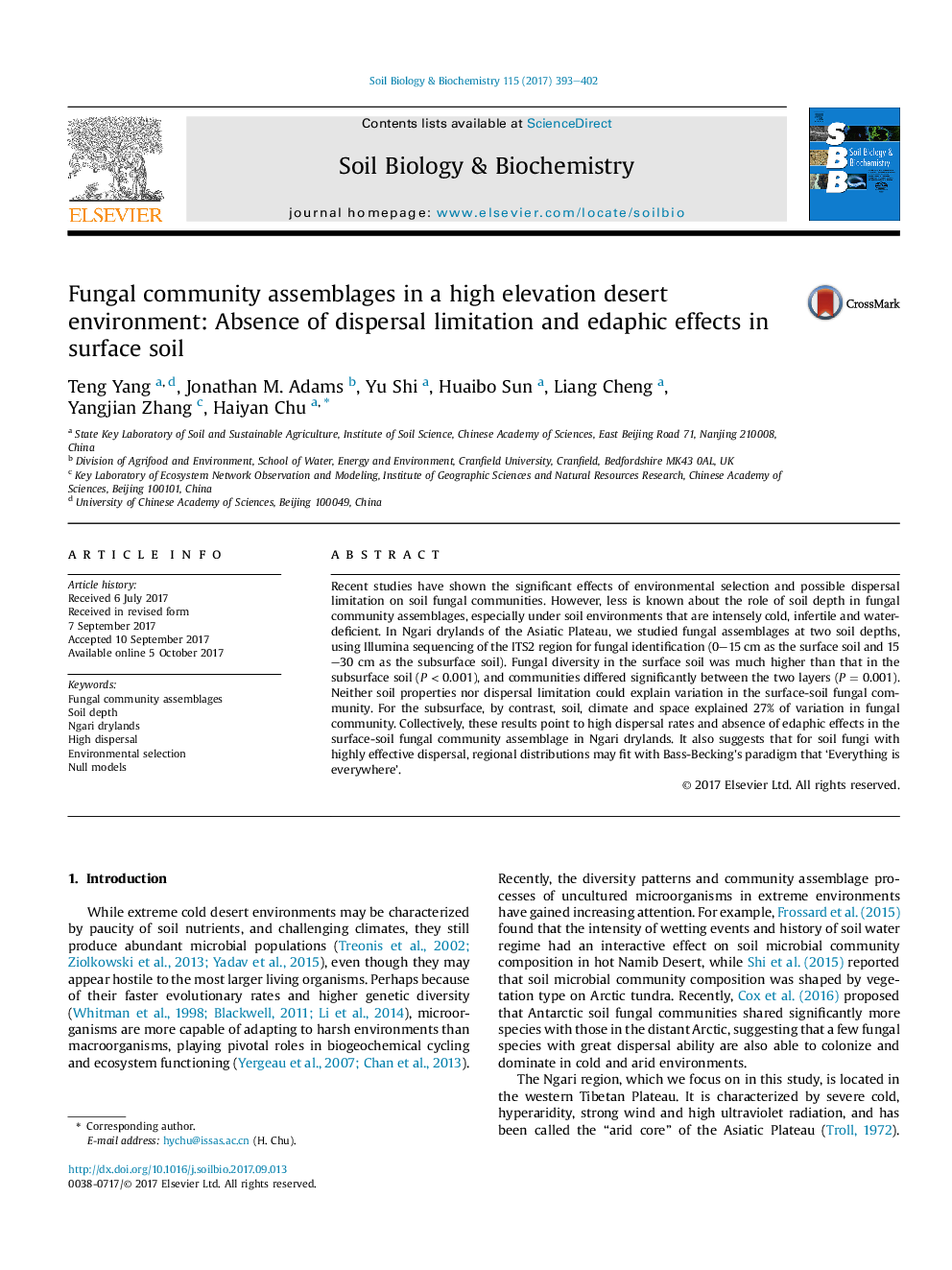| Article ID | Journal | Published Year | Pages | File Type |
|---|---|---|---|---|
| 5516260 | Soil Biology and Biochemistry | 2017 | 10 Pages |
â¢Fungal communities differed dramatically between surface and subsurface soils.â¢Surface soil had much higher fungal diversity than subsurface soil.â¢High dispersal contributed to the stochastic distribution of fungi in surface soil.â¢Space and environment structured fungal communities in subsurface soil.
Recent studies have shown the significant effects of environmental selection and possible dispersal limitation on soil fungal communities. However, less is known about the role of soil depth in fungal community assemblages, especially under soil environments that are intensely cold, infertile and water-deficient. In Ngari drylands of the Asiatic Plateau, we studied fungal assemblages at two soil depths, using Illumina sequencing of the ITS2 region for fungal identification (0-15Â cm as the surface soil and 15-30Â cm as the subsurface soil). Fungal diversity in the surface soil was much higher than that in the subsurface soil (PÂ <Â 0.001), and communities differed significantly between the two layers (PÂ =Â 0.001). Neither soil properties nor dispersal limitation could explain variation in the surface-soil fungal community. For the subsurface, by contrast, soil, climate and space explained 27% of variation in fungal community. Collectively, these results point to high dispersal rates and absence of edaphic effects in the surface-soil fungal community assemblage in Ngari drylands. It also suggests that for soil fungi with highly effective dispersal, regional distributions may fit with Bass-Becking's paradigm that 'Everything is everywhere'.
